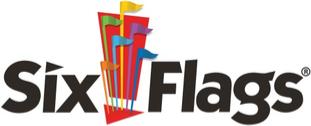Deferred revenue was $199 million as of September 30, 2020, an increase of $1 million, or less than 1%, from September 30, 2019. The increase in deferred revenue was primarily due to the deferral of revenue from members and season pass holders whose benefits were extended into 2021, almost entirely offset by lower season pass and membership sales.
Balance Sheet and Liquidity
As of September 30, 2020, the company had cash on hand of $214 million and $459 million available under its revolving credit facility, net of $22 million of letters of credit, or total liquidity of $673 million. This compares to $756 million of liquidity as of June 30, 2020. The company’s average monthly net cash outflow was approximately $27 million per month, which was within the company’s prior guidance range.
Based on the parks that are currently open, the company estimates that its net cash outflow through the end of 2020 will be, on average, $25-$30 million per month.3 The company has no debt maturities until 2024.
In the first nine months of 2020, the company invested $90 million in new capital projects, net of property insurance recoveries, paid $22 million in dividends, and prepaid $51 million of its 4.875% notes due 2024. Net debt as of September 30, 2020, calculated as total reported debt of $2,621 million less cash and cash equivalents of $214 million, was $2,407 million.
On August 26, 2020, the company further amended its credit facility to, among other benefits, suspend testing of its senior secured leverage ratio financial maintenance covenant through December 31, 2021. The company’s lenders also approved modified testing of its senior secured leverage ratio financial maintenance covenant through December 31, 2022. Through the duration of the amendment period ending December 31, 2022, the company agreed to suspend paying dividends and repurchasing its common stock, and to maintain minimum liquidity of $150 million.
In response to curtailed operations, and to preserve the company’s liquidity position, the company continues to take actions to reduce operating expenses and defer or eliminate certain discretionary capital projects planned for 2020 and 2021. The company is able to take additional measures or further modify park operations and park schedules based on changing conditions. At this time, the company believes it has sufficient liquidity to meet its cash obligations through the end of 2021 even if the open parks are forced to close.
Transformation Plan
The company commenced a major transformation plan in March 2020 to reinvigorate long-term profit growth, including revenue initiatives and productivity initiatives. The organization will focus on modernizing the guest experience through technology, and providing more value for its guests’ time and money.
Executing the transformation plan will require one-time charges of approximately $69 million, of which $60 million will be cash and $9 million will be non-cash write-off of ride assets. Approximately $29 million has already been recorded through the end of the third quarter. The company anticipates that it will incur approximately $5 million in charges in the fourth quarter of 2020, with the remaining charges expected to be incurred by the end of 2021. Approximately two-thirds of the investments in 2021 will be on the company’s technology platform to enable the realization of the expected transformation value.
